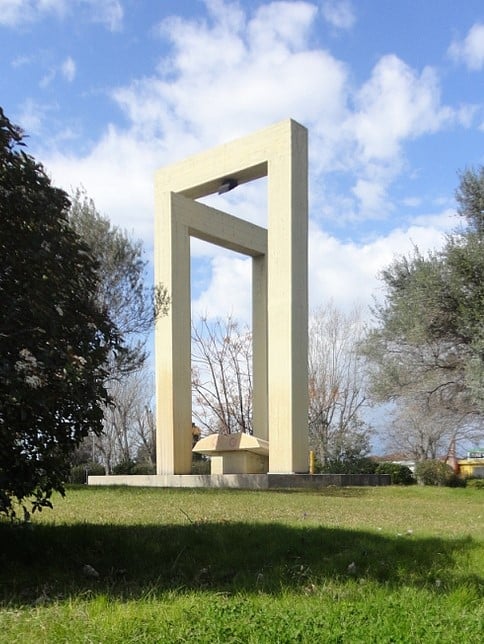Ημερομηνία: Ιουλ 18, 2024
Ώρα: 12:00 – 14:00
Αίθουσα: Βιβλιοθήκη “Αλκιβιάδης Χ. Παγιατάκης” (Κτηρια Χημικών Μηχανικών)
Διεύθυνση Διαδικτυακής Μετάδοσης: https://upatras-gr.zoom.us/j/93978990011?pwd=RArZ6HfxXKXbA8wk5q7ENeVoCGE475.1
Ομιλητής: Antony N. Beris (University of Delaware)
Τίτλος Ομιλίας: Recent developments in the modelling and experiments of blood rheology
Περίληψη
As cardiovascular diseases continue being the number one cause of death, understanding blood flow remains a critical component to a rational approach to contain them. Describing effectively blood flow requires unique conversion of science, computational mathematics and engineering. First, the mechanical behavior of blood under flow (i.e., its rheology) is inherently complex due to a time-dependent mesoscale structure corresponding to the formation of red blood cell (RBC) aggregates (rouleaux) and their disintegration at lower shear rates as well as their deformation at higher shear rates. This results in non-linear and time-dependent rheological characteristics in the form of thixotropy, viscoelasticity, shear-thinning, and yield stress. Second, blood is a living fluid that depends sensitively to the blood physiology. The former creates significant restrictions on the collection and analysis of experimental blood rheology data. The latter is responsible for significant variation of the model parameters. Third, the flow can also result in significant inhomogeneities, and concentration differences, further accentuated by flow-structure interactions and the presence of a cell-free layer near the wall.
This presentation will discuss advances in all those areas. First, thanks to detailed shear rheometry data obtained within our research group under well controlled conditions, several, successively more elaborate, models have been developed, applicable to both the steady and transient shear flows (see, for example, A. N. Beris, et al., Soft Matter 17, 10591 (2021)). Second, in the process of obtaining the best model parameters to fit the available data, involving both steady state and transients, a new parallel tempering stochastic approach has been developed and successfully implemented. Third, in an attempt to correlate the rheological model parameters to blood physiology, Machine Learning approaches have been used, not only improving previous parametrizations to key physiologic parameters (hematocrit and fibrinogen) but also discovering potential new ones, a major step towards personalized medicine. Fourth, recent advances in developing accurate flow simulations of a complex heterogeneous systems of aggregating industrial suspensions will be discussed that potentially can also be employed in improving blood flow simulations in the arterial vasculature.
Σύντομο Βιογραφικό Ομιλητή
Professor Antony N. Beris is a leading researcher in the field of modeling and simulation of flow processes, transport phenomena, and flow-induced phase transitions in systems with complex internal micros tructures. His work is pivotal in understanding the interrelationship between flow and microstructure in various systems such as polymer solutions and melts, turbulent flows, and free-surface flows with surfactants. His research adopts a hierarchical approach to tackle complex dynamic phenomena involving multiple scales in length and time. The foundation of his theoretical analysis lies in non-equilibrium thermodynamics of the microstructure.
Utilizing a recently developed modeling approach, Beris achieves a thermodynamically consistent macroscopic continuum description. This approach integrates microscopic information sourced from existing models or generated as necessary. To translate theory into practice, Beris employs analytical methods, including stability analysis and bifurcation theory, as well as numerical methods, leveraging high-performance computing simulations. His contributions extend to the development and efficient implementation of su itable numerical methods on advanced computer architectures.
Selected Publications:
- Sureshkumar, R., Beris A.N., Handler, R.A., “Direct Numerical Simulation of the Turbulent Channel Flow of a Polymer Solution”, Physics of Fluids, 1997.
- Beris, A.N., Tsamopoulos, J.A., Armstrong, R.C., et al., “Creeping Motion of a Sphere Through a Bingham Plastic”, Journal of Fluid Mechanics, 1985.
- Doraiswamy, D., Mujumdar, A.N., Tsao, I., Beris, A.N., et al., “The Cox-Merz Rule Extended – A Rheological Model for Concentrated Suspensions and Other Materials with a Yield Stress”, Journal of Rheology, 1991.
- Mujumdar, A., Beris A.N., Metzner, A.B., “Transient Phenomena in Thixotropic Systems”, Journal of Non-Newtonian Fluid Mechanics, 2002.
- Dimitropoulos, C.D., Sureshkumar, R., Beris, A.N., “Direct Numerical Simulation of Viscoelastic Turbulent Channel Flow Exhibiting Drag Reduction: Effect of the Variation of Rheological Parameters”, Journal of Non-Newtonian Fluid Mechanics, 1998.
Awards:
- Outstanding Doctoral Graduate Student Advising and Mentoring Award, University of Delaware, 2010
- Dow Outstanding Young Faculty Award of the Middle Atlantic Section of ASEE, 1991
- Chrisovergi’s Award, 1980
- Second Prize in National Mathematical Competition between High-School Seniors, 1975
- Second Prize in International Mathematical Competition (XVII Mathematical Olympiad) at Burgas, Bulgaria, 1975
- Fulbright Foreign Scholarship
Δείτε περισσότερα στον παρακάτω σύνδεσμο:
https://www.chemeng.upatras.gr/el/seminar-rooms/93/2724
______________
George Pasparakis
Associate Professor
Department of Chemical Engineering
University of Patras

